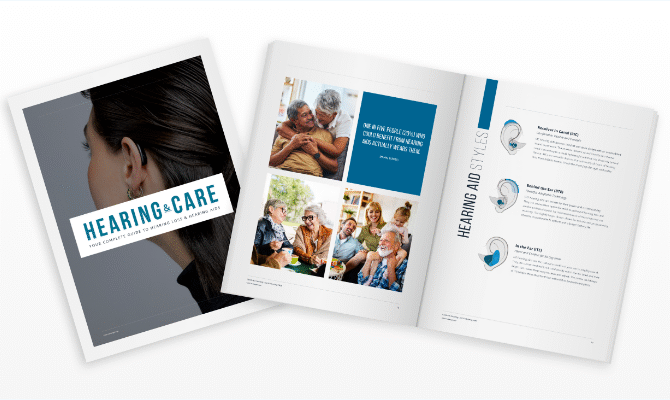Today’s modern hearing aids use two different types of battery systems for electrical power:
1) Zinc-oxygen batteries
2) Rechargeable battery systems.
Models built before 2016 utilize small metallic non-rechargeable zinc-oxygen batteries that fit into the hearing aids, typically into a flip-up battery compartment. These batteries come in four different sizes based on their power capacities – 312, 13, 10 and 675 milliamperes-hour. The most common type, the 312 (brown packaging), is typically used in the popular Receiver-In-the-Canal (RIC) hearing aids. The 13 (orange packaging) is used in many In-the-Ear (ITE) custom fit models, and the 10 (yellow packaging) is the smallest battery and used in In-the-Canal (ITC) custom fit hearing aids. The largest zinc-oxygen battery, the 675 (blue packaging) , has the most power and is typically used in Behind-The-Ear aids. Zinc-oxygen batteries must be activated by first removing the adhesive tab, and can be expected to typically last anywhere from 5-8 days, depending on the power consumption and functionality of the hearing aid, as well as the shelf life of the batteries (shelf life is usually indicated on the back of the battery package).
Most modern digital hearing aids (made after 2016) now come with a fully rechargeable battery option, which does away with the need to replace batteries every few days. The hearing aids have built-in rechargeable batteries, and the aids fit into a rechargeable case that plugs into a wall receptacle, where the aids are charged while they sit in the case. Typically the aids are placed in the rechargeable case overnight for the next days’ use, with the aids fully charged up to 30 hours use after just 3 hours recharging time. Often the rechargeable case is portable, giving the patient the freedom to charge anywhere. The rechargeable option avoids having to buy replaceable batteries, and is particularly good for patients who have manual dexterity problems as a result of arthritis or neurologic conditions which make handling zinc-oxide batteries difficult. However, rechargeable hearing aids tend to have a slightly higher acquisition cost than the older zinc-oxide battery hearing aids. Rechargeable battery hearing aids have proven to be very popular with patients.



